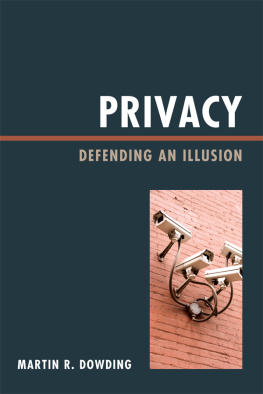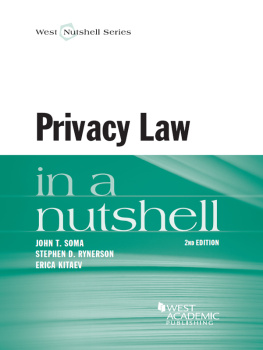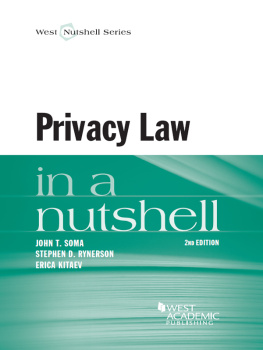This chapter takes a look at the history of information, technology, beneficiaries of that technology, and their relationship to data governance development over time. Innovation in business models, technology capabilities, and the changing relationships in the ownership and accessibility to data has resulted in a fundamental shift in size and complexity of data governance systems. Additionally, the increasing trend where collective numbers of individual consumers actually drive information technology, also known as consumerization of information technology (IT), adds yet more complexity to business relationships, fiduciary duties toward data about people, and underlying system requirements. In short, this chapter introduces the context of informational privacy evolution and its relationship to new, shiny, and complex things.
Complexityin requirements, systems, and data useshas led to increasingly sophisticated personal data management and ethical issues, the dawning of the personal information service economy, and privacy engineering as a business-critical and customer satisfaction imperative and necessity. This book will unpacked that complexity and then examine how technology and people have interacted and how this interaction has led to data privacy concerns and requirements.
The Relationship Between Information Technology Innovation and Privacy
Throughout history, one can correlate innovation and the use of information technologies to pivotal moments in the history of privacy. In fact, there are many examples where technology either directly or indirectly impacts the sharing of personal details.
Take, as an example, the Gutenberg press and the invention of movable type. The development of the printing press and movable type not only directly led to the emergence of inexpensive and easily transportable books but also contributed to the development of the notion of personal space, privacy, and individual rights, as noted in Karmaks History of Print: [Print] encouraged the pursuit of personal privacy. Less expensive and more portable books lent themselves to solitary and silent reading. This orientation to privacy was part of an emphasis on individual rights and freedoms that print helped to develop.
Then in the19th century, technology took privacy in another direction. The book The Devil in the White City describes another time where movement and communication, facilitated by rail travel, inexpensive paper and writing implements, and increasing literacy, also added to the mass documentation and sharing of everyday lifefrom grocery lists to documented invention notebooks to planning for grand world fairs. This documentation of personal life created additional rights and obligations to share that information in culturally acceptable ways. So much temporal information also helped to piece together the lives of those living in that period of explosive innovation and growth in a manner never before available to historians or anthropologists. One wonders, will we feel the same about our old MySpace postings throughout time?
Another example (also in the late 1800s) of innovation of information technology that resulted in a pivotal privacy moment was the invention of the cameraor more precisely, rolled film. In 1888, George Eastman invented film that could be put on a spool, preloaded in easy-to-handle cameras, and sold much like todays disposable cameras.
Two years later, prominently citing the example of photography as technology capable of intrusion upon individual space and publicity, Warren and Brandies wrote an article that first articulated the right to privacy as a matter of US jurisprudence. Note, the Warren and Brandies article, The Right to Privacy, was not the first articulation of privacy rights; in fact, one can go back to biblical times to find discussions of substantive privacy.
SACRED REFERENCES TO PRIVACY
By Jay Cline, President of privacy consulting firm MPC
The inventions of the camera, database, and Internet browser gave rise to modern Western ideas about privacy. But the seeds of privacy were planted in world cultures and religions long before these technological innovations.
Perhaps the first privacy-enhancing technology was the fig leaves of Adam and Eve, the first couple of the Jewish, Christian, and Islamic faiths. In Genesis 3:7, the pair implemented a bodily privacy control: Then the eyes of both were opened, and they knew that they were naked. And they sewed fig leaves together and made themselves apron.
In Genesis 9:23, after several generations had passed, the value of bodily privacy had become a broader social objective people helped one another accomplish. This was apparent when Noahs sons discovered him drunk and unclothed in his tent: Then Shem and Japheth took a garment, laid it on both their shoulders, and walked backward and covered the nakedness of their father. Their faces were turned backward, and they did not see their fathers nakedness.
This respect for bodily privacy expanded within Jewish culture to encompass all private activity, even in the public space. You could harm someone if you viewed their private affairs without their awareness. According to Rabbi David Golinkin, author of The Right to Privacy in Judaism , the Talmud contains two teachings on this topic:
The Mishnah in Bava Batra 3:7 states: In a common courtyard, a person should not open a door opposite a door and a window opposite a window.
The Rema adds in the Shulhan Arukh ( Hoshen Mishpat 154:7) that it is forbidden to stand at your window and look into your neighbors courtyard, lest he harm him by looking.
The Book of Proverbs, a collection of wisdom of right living prevalent in the ancient Jewish culture, contains three verses praising the value of confidentiality:
Whoever goes about slandering reveals secrets, but he who is trustworthy in spirit keeps a thing covered. (11:13)
Whoever covers an offense seeks love, but he who repeats a matter separates close friends. (17:9)
Argue your case with your neighbor himself, and do not reveal anothers secret. (25:9)
The Christian scriptures didnt highlight the concept of privacy. But Mohammed, living 600 years after the time of Jesus, continued the Jewish respect for private affairs. Abdul Raman Saad, author of Information Privacy and Data Protection: A Proposed Model for the Kingdom of Saudi Arabia, identified the following privacy-friendly verses in the Quran:
O ye who believe! enter not houses other than your own, until ye have asked permission and saluted those in them: that is best for you, in order that ye may heed (what is seemly). If ye find no one in the house, enter not until permission is given to you: if ye are asked to go back, go back: that makes for greater purity for yourselves: and God knows well all that ye do. (An-Nur: 2728) (24:2728)
O ye who believe! Avoid suspicion as much (as possible): for suspicion in some cases is a sin: And spy not on each other behind their backs. Would any of you like to eat the flesh of his dead brother? Nay, ye would abhor it.... But fear God: For God is Oft-Returning, Most Merciful. (Al-Hujurat: 12) (49:12)









